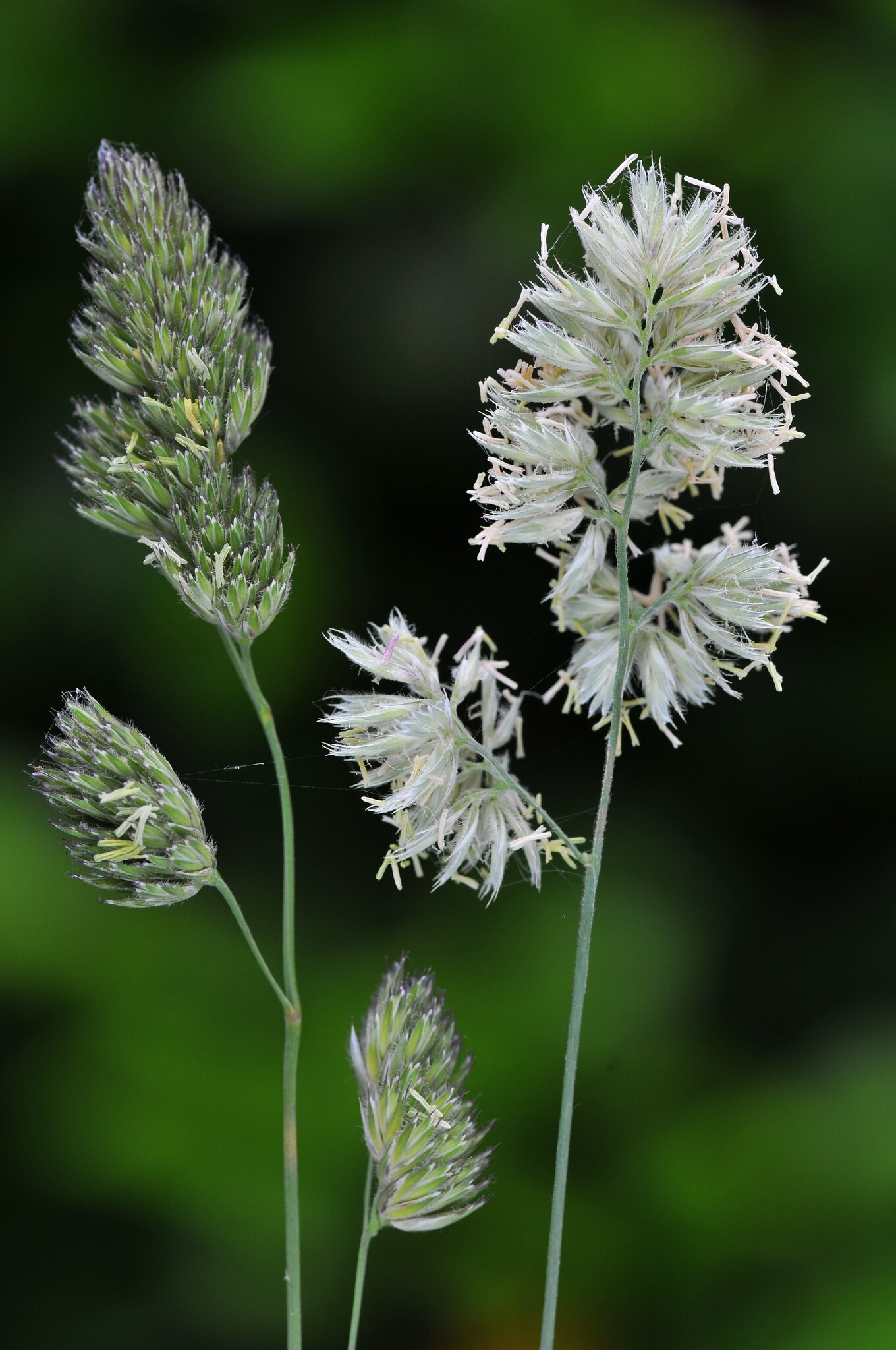
Greek dactylos – finger, referring to the stiff shape of the flower cluster.
Perennial with strongly flattened shoots and short rhizomes and/or stolons. Leaves with sheath margins united to half way, at least in the upper leaves. Inflorescence compound, paniculate, the lower branches spike-like, spatheless. Spikelets flattened laterally, of 2-5 florets, crowded in dense one-sided clusters. Glumes more or less equal. Lower glume 1-3 nerved, upper glume 3 nerved. Lemmas keeled, 2 nerved, 2 keeled, margins ciliate like those of the glumes, awned.
A common wayside grass found in meadows, grasslands, and disturbed ground.Too coarse for turf.
Seed.
D. glomerata is grown as a pasture/fodder grass.
Dense 1-sided flower clusters.
1 species from temperate Europe, North Africa and Asia.
Source: (2005). Poaceae. In: . Horticultural Flora of South-eastern Australia. Volume 5. Flowering plants. Monocotyledons. The identification of garden and cultivated plants. University of New South Wales Press.
